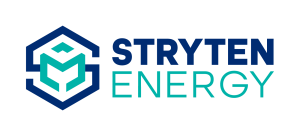When comparing low-maintenance motive power battery options, there are several battery technologies to consider for your fleet. Each should be carefully weighed to find the best fit for your company’s requirements.
Power is not “one-size-fits-all.” There are several battery technologies to consider for your motive power fleet. For many organizations, cost and performance are the top considerations for the batteries they select to power their forklift fleets. Each battery solution should be carefully weighed to find the best fit for your company’s requirements.
There are several metrics that can help motive power managers select the right battery for their specific application. In this blog, we will compare data on four low-maintenance battery technologies used in a variety of motive power applications.

Batteries Compared
Tubular
Tubular batteries utilize several long spines of lead surrounded by active material in the positive plate to facilitate electrical conduction. The paste is held in place by a special fabric called a gauntlet. These batteries have higher material utilization than standard flat plate batteries, which allows for more amp hours (Ah) in the same box or a longer watering interval, with the same Ah, due to the larger headspace.
The Stryten Energy M-Series T310 features improved separator technology for added vibration protection and increased positive spine diameter for longer life and greater efficiency. When the M-Series T310 is paired with a watering contract, this battery provides superior reliability, value and performance.
Absorbed Glass Mat (AGM)
AGM batteries use a special glass mat to hold the electrolyte and allow ions to pass between positive and negative elements. A valve at the top of the cell allows for most of the gases generated during charging to recombine inside the cell, significantly reducing water loss and eliminating the need to water the battery. Additionally, AGM batteries can be recycled in a similar manner to standard flooded lead batteries.
The M-Series AGM200 combines the dependable power of Stryten Energy’s lead batteries with the convenience of valve-regulated lead acid (VRLA) technology. The AGM200 is ideal for light to medium duty applications using conventional charging.
Lithium
Lithium batteries deliver faster charging, greater efficiency, and increased cycle life, all in a maintenance-free package. A standard feature found in lithium batteries is the battery management system (BMS). The BMS is an onboard computer that monitors temperature, voltage and current at the individual cell level.
The Stryten Energy M-Series Li600 offers greater efficiency and suffers less irreversible capacity loss due to high depth of discharge. The Li600 is well-suited for severe duty applications requiring opportunity and fast charging capabilities.
Thin Plate Pure Lead (TPPL)
With their thinner plates, TPPL batteries can deliver higher current peaks and are designed for fast and opportunity charging. Due to shallow 60% depth of discharge, TPPL has a lower amp hour output per cycle, which means more frequent charging. TPPL is ideal for light to medium applications.
Data Comparisons*
Available Amp Hour Throughput per Cycle
A battery cycle refers to the complete process of discharging a battery from its fully charged state to a certain depth of discharge (DOD), then returning to a fully charged state. The DOD, expressed as a percentage, represents the extent to which the battery’s total capacity is utilized during a single charge-discharge cycle.
In this comparison, the M-Series T310 provides the greatest available amp hour throughput per cycle. Although the M-Series Li600 appears at a relatively low amp hour throughput per cycle, the energy available from a lithium battery will remain constant regardless of whether the application is light duty or severe duty. Compared to the other battery technologies analyzed, TPPL is shown to have the lowest relative available amp hour throughput per cycle, due to lower warranted depth of discharge rates.
Because of the lower amp hour throughput per cycle, TPPL users will have to charge more, impacting productivity.

Lifetime Warranted Amp Hour by Usage
Lifetime warranted amp hours are crucial for assessing a battery’s longevity, performance over time and suitability for specific applications. They provide information on the expected cycle life and help users anticipate battery performance changes.
Considering lifetime amp hours is essential for managing total cost of ownership, ensuring reliability and making environmentally sustainable choices. If a battery has more warranted amp hours, they should be getting more coverage from warranty for the similar amp-hour throughput batteries.
The M-Series AGM200 has the lowest warranted amp hour by usage because of the 24-month warranty. TPPL has a 48-month warranty, and the M-Series T310 has a 60-month warranty. The M-Series Li600 is covered by a 72-month warranty. All warranties are subject to conditions.

Price per 1,000 Warranted Amp Hours
The price per 1,000 warranted amp hour is a good indicator of the value a company is getting over the warranted lifetime of the battery.
TPPL batteries are approximately three times the cost per warranted amp hour versus the M-Series T310. Although lithium batteries have a high cost of initial investment, their cost per warranted amp hour is a great value. The cost per warranted amp hour for the M-Series AGM200 is high due to the shorter warranty compared to the other batteries, but it is still slightly lower than the TPPL.
Depending on the application needs, customers concerned with the total cost of ownership may be better served by going with a tubular, AGM or lithium solution, as it will net them a lower cost per AH versus TPPL.

Conclusion
When comparing low-maintenance motive power battery options, your environment and your performance needs must be considered. For example, while TPPL batteries have lower maintenance requirements than traditional flooded lead batteries, they have a short warranted lifetime at a higher cost. One available lower maintenance tubular lead option is the M-Series T310. If “no maintenance” is a requirement, other options to consider would be the M-Series Li600 or the M-Series AGM200.
A power study can help companies determine the right motive power battery and charger solutions for their forklift fleet. Stryten Energy inCOMMAND™ is an energy performance management software tool that makes it easy to design and deploy web-connected battery and charger solutions.
By leveraging real fleet data, multiple motive power options can be compared, enabling the best solution to be designed for your unique environment. Whether you’re considering lead or lithium batteries, opportunity or fast charging, your fleet’s specific data will allow you to make fact-based decisions.
Click here to learn more about Stryten Energy’s full line of battery options.
* While the amp hours of the batteries in these comparisons may vary, the products noted are most comparable to the amp hour of the TPPL presented.







